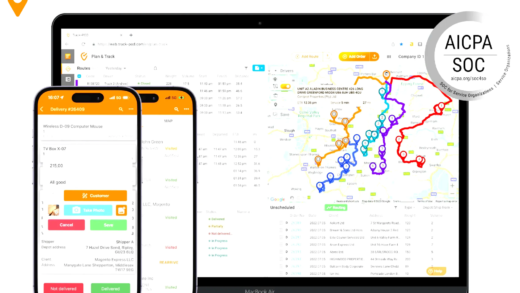This article discusses the various charging options available for plug-in hybrids in apartments, including shared and public charging stations, and the feasibility of installing personal charging stations. It highlights the benefits and drawbacks of owning a plug-in hybrid in an apartment setting, as well as the incentives available for apartment residents. Essential considerations before purchasing a plug-in hybrid are also outlined, ensuring readers make informed decisions regarding their vehicle choice.
Can I Charge a Plug-in Hybrid in My Apartment?
Charging a plug-in hybrid in an apartment setting raises several questions and concerns. First off, many apartment residents wonder if it’s feasible to charge their vehicles at home. The answer largely depends on the apartment’s infrastructure and the regulations set by the property management. In some cases, residents can install a charging station in their parking spot, but this often requires approval from the landlord or homeowner’s association. It’s crucial to check if there are existing charging stations in the building or nearby.
Moreover, some apartments may have shared charging stations available for residents. These setups usually require a membership or payment for usage, but they provide a convenient option for those without personal charging access. It’s important to understand the local laws and your lease agreement regarding electric vehicle (EV) charging. By being aware of these rules, residents can avoid potential issues and ensure they can charge their plug-in hybrids efficiently.
Charging Options for Apartment Residents
Apartment residents have several charging options for their plug-in hybrids. The most common are:
- Shared Charging Stations: Many apartment complexes now offer shared charging stations. These can be accessed by residents and are often managed through a mobile app.
- Home Charging Solutions: If permitted, residents can install a personal charging station in their designated parking space. This requires coordination with the landlord and possibly an electrician.
- Public Charging Stations: Nearby public charging stations can serve as an alternative. Numerous apps can help locate these stations, making it easier to plan trips.
- Workplace Charging: Some employers provide charging stations at the workplace, which can be a practical option for daily charging needs.
Each option has its advantages and drawbacks. For example, shared charging stations may be convenient but could be busy during peak hours. On the other hand, having a personal charging station ensures that you have immediate access, assuming your apartment allows it.
Special Considerations for Plug-in Hybrids
Owning a plug-in hybrid in an apartment setting comes with unique considerations. One major factor is battery management. Unlike traditional vehicles, plug-in hybrids rely on both electric and gasoline power, meaning that effective charging management is essential to maximize efficiency. Residents should be mindful of the battery’s state of charge and plan their charging accordingly.
Another aspect is the charging speed. Depending on the charging infrastructure available, it might take longer to charge a plug-in hybrid compared to a fully electric vehicle. This is particularly relevant for those relying on shared charging stations, where availability can be unpredictable.
Lastly, residents should consider the potential need for an upgraded electrical panel if they plan to install a personal charging station. This can involve additional costs and coordination with the property management.
Do I Need a Dedicated Parking Spot?
When considering charging options for plug-in hybrids in apartments, one common question is whether a dedicated parking spot is necessary. The short answer is: it depends. If you plan to install a personal charging station, having a designated parking space is often a requirement. This is because most apartment complexes have specific areas allocated for charging installations to ensure safety and accessibility.
However, if you’re relying on shared charging stations, a dedicated spot may not be necessary. Many residents successfully charge their plug-in hybrids at communal stations without needing to reserve a specific parking area. It’s crucial to check your apartment’s policies regarding charging access and space allocation. A good rule of thumb is to communicate with your landlord or property manager to clarify your options.
Benefits of Owning a Plug-in Hybrid in an Apartment
Owning a plug-in hybrid in an apartment comes with several attractive benefits. First and foremost, plug-in hybrids can significantly reduce fuel costs. With the rising prices of gasoline, having an electric option for short trips can save you money. Furthermore, plug-in hybrids typically offer better fuel efficiency compared to traditional vehicles.
Another major advantage is environmental impact. By using electric power for shorter journeys, residents contribute to lower emissions, which is a win for the planet. Many cities also encourage the use of electric vehicles by providing incentives like tax rebates or reduced parking fees, adding to the financial allure of owning a plug-in hybrid.
Lastly, plug-in hybrids can enhance your lifestyle by providing flexibility. You can switch to gasoline power for longer trips while enjoying the benefits of electric driving for daily commutes. This dual capability is particularly advantageous for apartment dwellers who might not have consistent access to charging stations.
Drawbacks of Owning a Plug-in Hybrid in an Apartment
Despite the benefits, there are notable drawbacks to consider when owning a plug-in hybrid in an apartment. One significant issue is charging accessibility. Depending on your apartment’s infrastructure, finding a reliable charging station may be challenging. Shared stations can be busy, especially during peak hours, leading to potential frustration when you need to charge your vehicle quickly.
Additionally, parking limitations can pose problems. Many apartment complexes have limited parking spaces, and finding a spot that’s convenient for charging can be tricky. You might have to walk a distance to get to your car after charging, which isn’t ideal after a long day.
Finally, costs associated with charging station installation can add up. If you need to upgrade your electrical panel or pay for installation fees, these expenses can deter some residents from fully committing to a plug-in hybrid lifestyle.
Finding Charging Stations Near My Apartment
Finding charging stations near your apartment is essential for plug-in hybrid owners. Numerous apps and websites can help you locate the nearest charging points. Some popular options include:
- PlugShare: This app provides a comprehensive map of charging stations, showing availability and user reviews.
- ChargePoint: A widely used network that lists charging stations and allows users to check real-time availability.
- Google Maps: Simply search for “charging stations” to find options nearby, complete with directions.
- EVgo: This network focuses on fast charging stations and is expanding rapidly across urban areas.
Utilizing these resources helps ensure that you can charge your plug-in hybrid conveniently. Always check the charging speed and compatibility with your vehicle before heading out, as not all stations support all types of plug-in hybrids.
Incentives for Apartment Residents Buying Plug-in Hybrids
Apartment residents considering a plug-in hybrid can benefit from various incentives that make the purchase more appealing. Many regions offer:
- Tax Credits: Federal and state tax credits can significantly lower the overall cost of a plug-in hybrid.
- Rebates: Some local governments provide rebates for purchasing electric or plug-in hybrid vehicles.
- Reduced Charging Rates: Certain utility companies offer discounts for charging during off-peak hours.
- Free Parking: In some cities, electric vehicle owners can park for free or at reduced rates.
These incentives can help offset the initial investment and running costs of owning a plug-in hybrid, making it a more attractive option for apartment dwellers.
Installing a Charging Station in My Apartment Complex
Installing a charging station in an apartment complex can be feasible but often requires navigating several steps. The process typically involves:
- Approval from Management: You’ll need to discuss your plans with the landlord or homeowners’ association to get their consent.
- Assessing Electrical Capacity: An electrician may need to evaluate if the building’s electrical system can handle additional load.
- Installation Costs: Residents should be prepared for potential costs, including installation fees and any necessary upgrades to the electrical system.
- Shared Access: Consider proposing a shared charging station that multiple residents can use, which could be more appealing to management.
Engaging with your neighbors to gauge interest in shared charging solutions can help build a case for installation, benefiting all plug-in hybrid owners in your complex.
Considerations Before Purchasing a Plug-in Hybrid
Before buying a plug-in hybrid as an apartment dweller, several factors must be evaluated:
- Cost: Assess the total cost of ownership, including purchase price, insurance, and charging expenses.
- Charging Accessibility: Ensure that you have reliable access to charging stations, whether at home or nearby.
- Usage Patterns: Consider how often you will use electric versus gasoline power and the typical range you need.
- Lifestyle Compatibility: Evaluate whether a plug-in hybrid fits your daily routine and commuting needs.
Taking these considerations into account will help ensure that a plug-in hybrid is the right choice for your lifestyle and living situation.





Comments are closed.